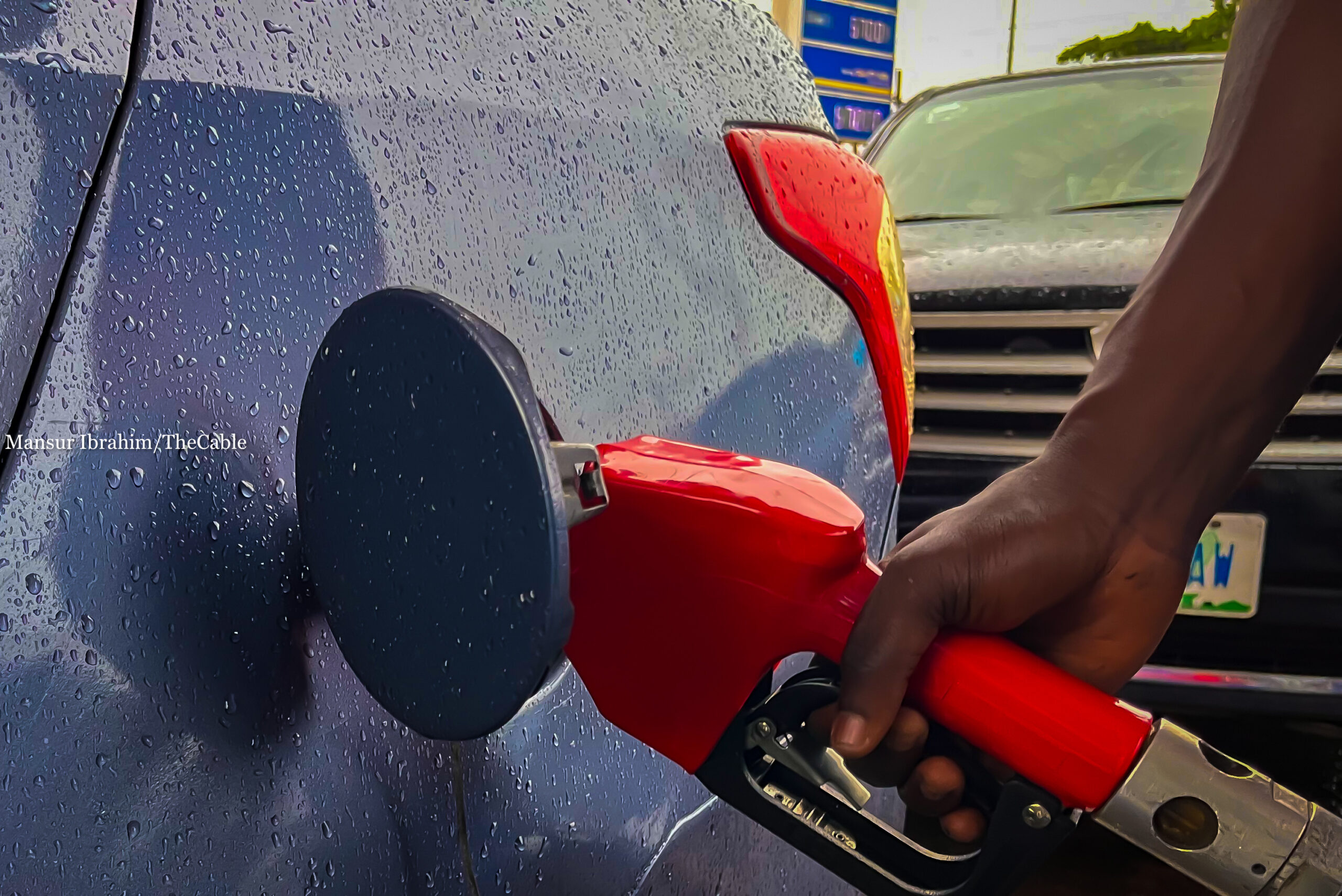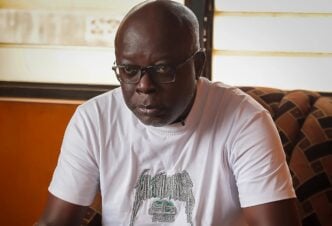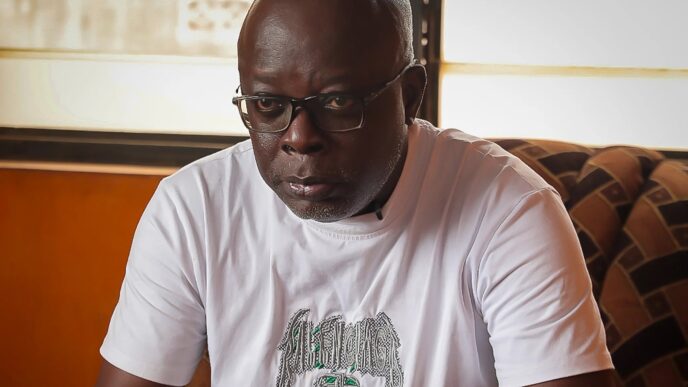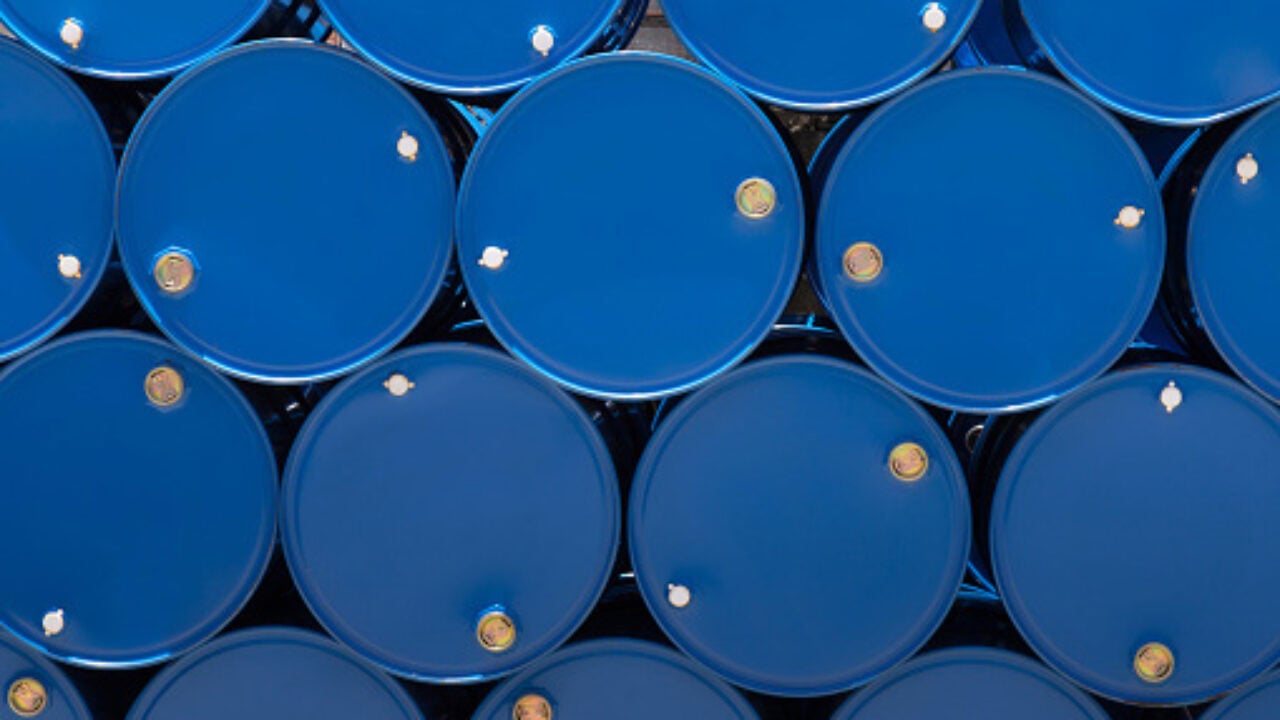Hercules landfill, Ogun state
Like a mammoth mountain, Hercules landfill towers above Giwa-Oke-Aro, a suburban area in Ogun state. It is feasted upon by flies, birds and human scavengers of different ages who scour through the deposits. The dumpsite looms so large and several feet wide. It is more than 200 feet high with its decaying dome visible across the town.
The wasteland collects trash from more than five communities, including parts of the Ishaga area in Ifako-Ijaiye LGA, Lagos state, and Oke-Aro and Giwa areas in Ogun state. Every day, everything from plastics and styrofoams to vegetables, yam peelings, and chemical and industrial wastes end up in the dump site.
Hundreds of old refrigerators, tons of discarded television boxes, stockpiles of stained brown mattresses, beer bottles and plastic bales form heaps of time bombs. Rotten fruits and vegetables, slime-covered leftovers, dung, decaying dead animals and fly-infested trash bags constitute an overwhelming putrid stench that wafts through the air and floats over the landfill like a foul wave of cloud trespassing into nearby homes.
The yuck of decay and contaminated leachates flow into the collapsing canal near the landfill, finding their way into streams and wetlands which may affect wells and boreholes in the area.
Advertisement
Samson Gbadamosi, the community leader of the estate directly opposite the landfill, said residents have been living with the environmental risk posed by the illegal landfill for over 20 years.
He said many people living close to the landfill have complained of irritation from the odour and constant cough caused by fumes from the open burning on the landfill.
The community leader said people affected by the odours and fumes mostly resort to self-treatment, adding that residents are now used to the portending danger.
Advertisement

“The landfill has been in the area for more than 20 years. It is beyond our capabilities to make people stop dumping on it. We have written to the local government to complain many times but nothing has come out of it. The waste site has grown and become an eyesore. The odour is bad, people close to the entrance of the estate have come to complain several times,” he said.
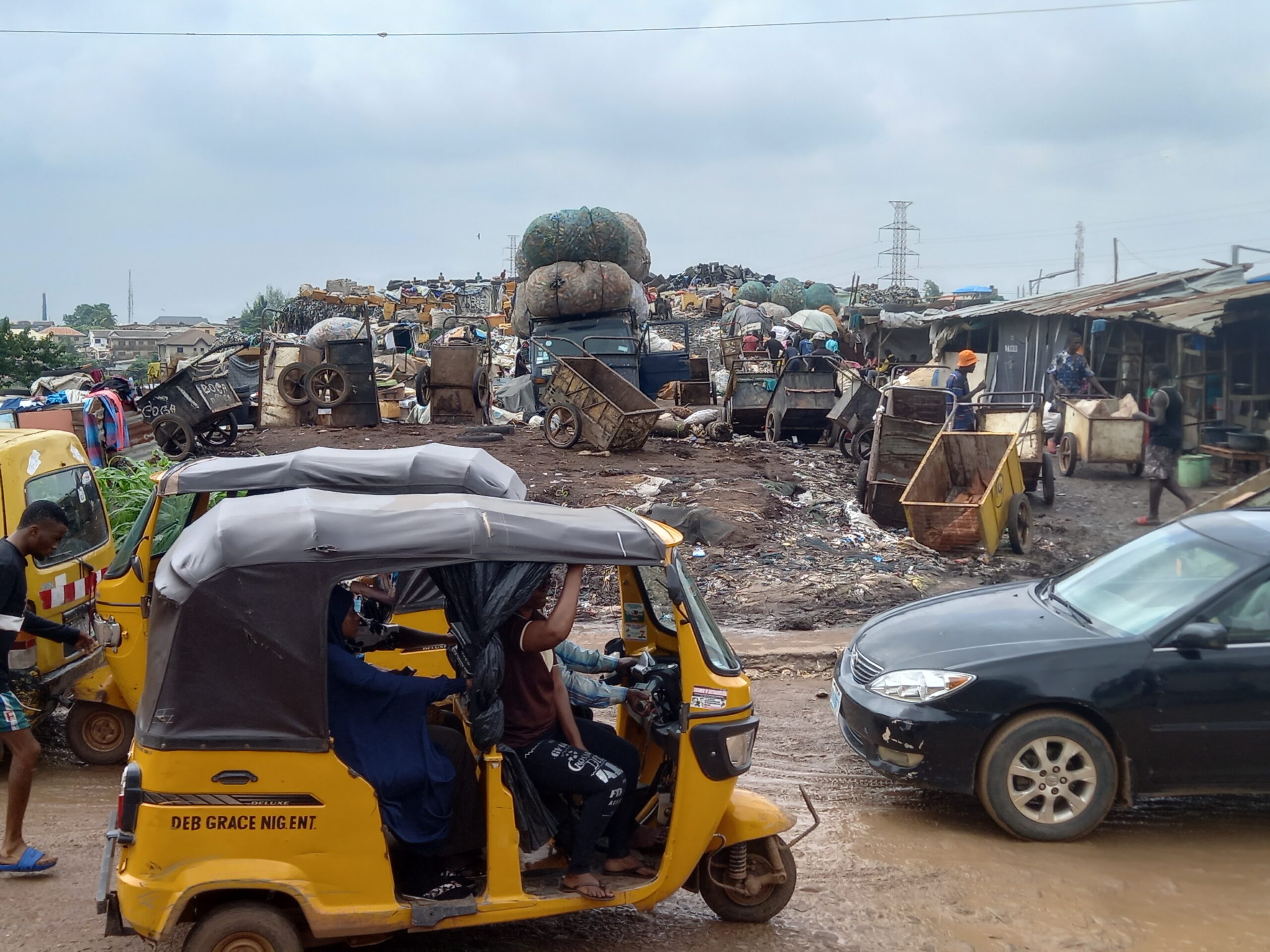
‘IT STARTED AS CHILD’S PLAY’
In the morning, when residents are heading out to earn a living and the pothole-ridden road is busy, young boys of northern descent who work as cart pushers dominate the streets, pushing their waste-filled and uncovered carts in traffic towards the landfill. Some hang around the car dealership next to the landfill waiting to lend a hand to incoming cart pushers while others sit in various shacks that spread around the landfill.
One of these shacks is erected at the landfill’s entrance on the right side. It sometimes serves as a waiting or resting room for ram sellers, usually old men, already pressed hard by life. They lie bare-back on rough planks in the shack as they monitor a scanty number of rams huddled together on the filthy ground.
Advertisement
The makeshift corral that holds the rams is a ditch away from the busy, ramshackle road that runs from the Toyin bus stop in the Ishaga area of Lagos past the front of the landfill to the Giwa area of the community. The wide ditch started as a narrow canal carefully designed to collect water flowing into nearby streams.
Gradually, as the landfill grew in size, the narrow ditch turned out to become a medium-sized opening hedged with tons of car tyres; then, it grew into a weed-choked ground, and in the blink of an eye, it became a full-scale wasteland with its opening stretching to the bad busy road.
Adewole Jones, a lawyer and chairman of Ajibose Akindero Community Development Association (CDA), said as far back as the 1990s, the landfill was just a narrow gorge where youths in the community used to hunt for snails before it turned into a mountain of refuse.
The former legal adviser for Ifo LGA said for a long time, the land was an object of legal tussle between the local government authority and one Olubode, who took over the land at one point and turned it into a waste disposal enterprise.
Advertisement
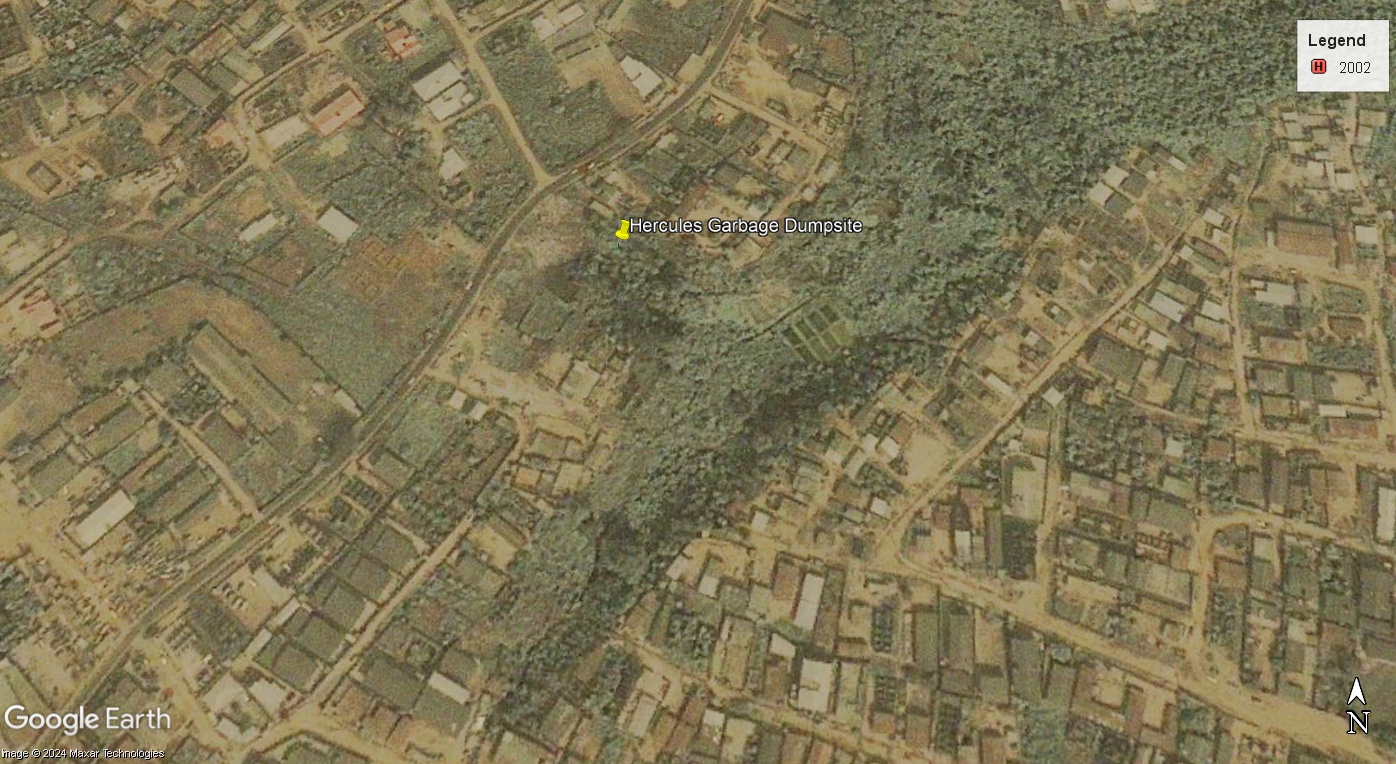



“It started as a child’s play. It was a deep gorge. I have actually entered the gorge once with one army officer who used to live around here. Residents would say, ‘Let me dump this waste into the gorge’ and that was how it started. Then, a particular man by the name Olubode took possession of the place, claiming he bought the land from people at the other side, I think they are called the Oluweri Agbogunleri family,” Jones said.
“He took charge of that place and started using it. So, people would come and dump their things and he would collect money for managing the waste spills. Sometimes, when people come to dump their refuse in the middle of the night, it creates traffic around the place. So, he would be the one to push those things to where they ought to be.
Advertisement
“By way of managing it, he collected stipends from people. It came to a time when he was dragged to court. Ifo LGA was involved at that time. He was sued to get the landfill away from him but Ifo LGA has been very irresponsive.”
By Jones’ calculation, the landfill has been there for more than 25 years, giving room for cart pushers to take over the community’s waste collection system and continue using the landfill as a disposal ground.
Advertisement
“If we have a responsible government in Ogun state, what could have happened there is a place where the government could have made money, but the money may not be much. Of course, people have to generate and dump refuse. So what we have now is that some truants are there in the name of keeping the place orderly,” Jones said.
CART PUSHERS FILLING IN THE WASTE MANAGEMENT GAP
Advertisement
As it stands, the landfill is directly inaccessible to residents. Only cart pushers who collect all kinds of waste from different parts of the communities are allowed to dump them in the landfill.
Due to the lack of coordinated waste management in the area, the cart pushers have filled the gap left by the government. Residents, including hospital owners, market traders, landlords and tenants pay cart pushers to dispose of their waste every day. The price varies depending on the size of the waste being disposed.
To dispose of a few trash bags, cart pushers most times demand between N200 to N1,000; but disposing of old refrigerators, old TV boxes and mattresses may be as high as N3,000 to N5,000. Wastes are sometimes shipped in with uncovered trucks and these trucks often return to wherever they came from with tonnes of plastic bottles.
Francis Nwosu, a shop owner in the Giwa area for about 10 years, said the cart pushers started from picking metals on the streets to now collecting waste from homes and dumping them on the landfill.
The trader, who often uses their service, said: “Sometimes, I pay N200, sometimes N500. It depends on the quantity of waste I want to dispose of.”
When this reporter tried to access the hot spots of the landfill where waste is dumped, manually segregated and plastics are measured for sale, I was denied access by a group of men numbering about seven with half of them shirtless.
Sefiu Sefiu, one of the cart pushers who speak Hausa and scarcely pidgin English, confirmed to TheCable that he pays a group of people on the landfill before he is allowed to dispose of the waste he has collected.
A resident of the area familiar with activities in the landfill said the person in charge who collects illegal levies before waste is dumped is called “Seriki”. The source said Seriki rents out carts to the young boys and also collects a fixed amount from them before they are allowed to dump their waste on the landfill.
Meanwhile, information on the website of the Ogun State Waste Management Authority (OGWAMA) shows that two private waste collectors/logistics companies – Shollies World Enterprises and Ventinove Ltd – were deployed to the Oke-Aro axis of Ifo LG in 2020 and 2021 respectively.
Shollies World, whose contract is still listed as “existing” on OGWAMA’s website, was deployed to cater for “Ojodu, Abiodun, Yakoyo, Alagbole, Akute, Tipper Garage, Oke –Aro to Giwa and all streets on the left-hand side”. Ventinove Ltd listed as a “fresher” is to collect and dispose waste from “Agbado, Lambe bridge left-hand side, which comprises of Lagos state water cooperation, Oke Aro, Giwa, and Matogun.”
TheCable reached out to the owners of both companies, Okunseyinde Adesola and Abiona Abiola, and they confirmed that their trucks stopped picking up waste in the Oke-Aro/Giwa areas due to “low patronage and bad roads.”
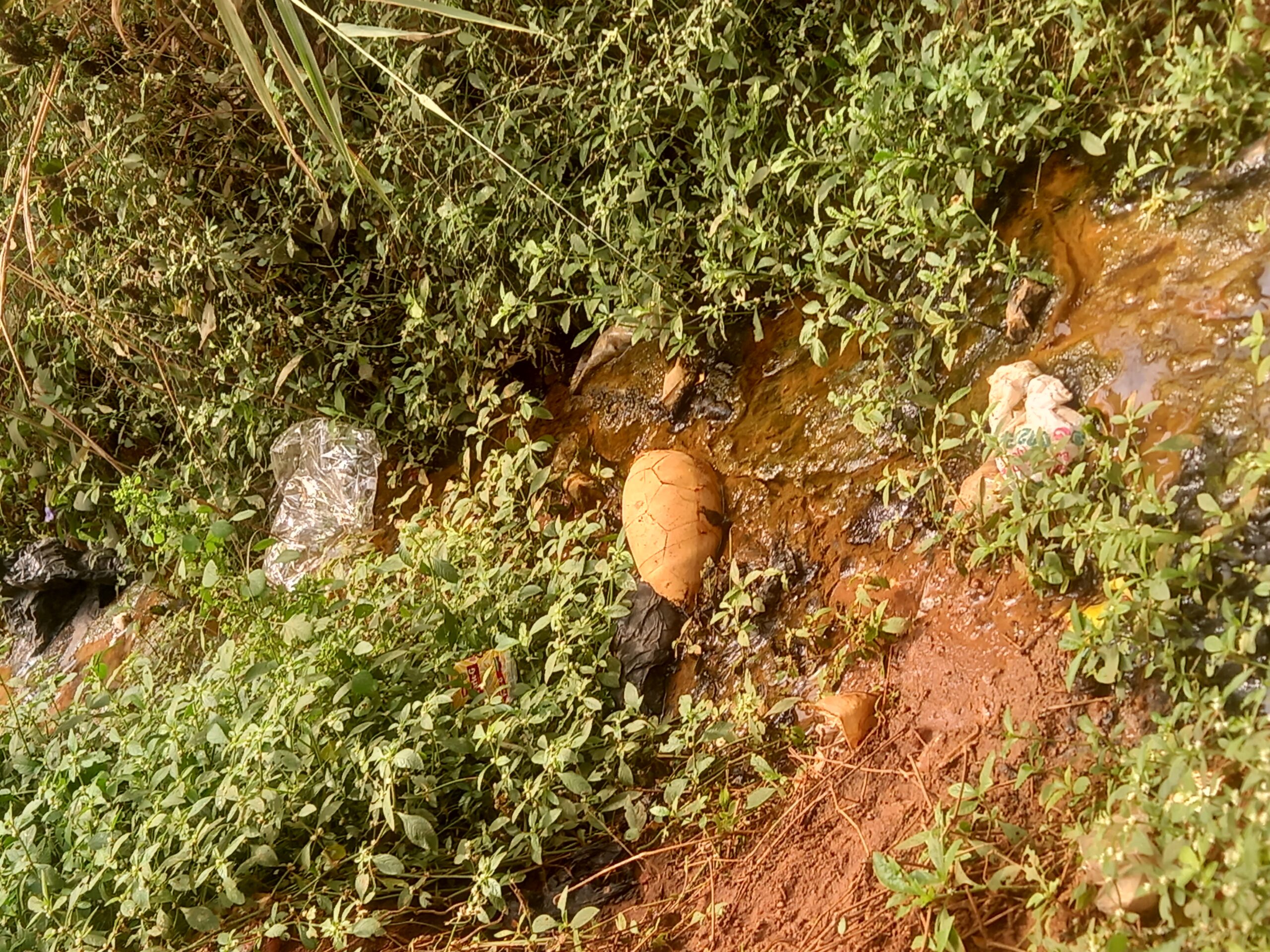
“The roads are bad and it led to the trucks breaking down often. We are not even making that much. During COVID, the business ran into a loss and we could not continue with it. So we stopped serving the area,” one of the waste collectors told TheCable.
However, Jones, chairman of Ajibose CDA, said he has never seen any of the companies’ trucks in operations in the axis. Francis Nwosu, a shop in the area, corroborated him.
“What presence of government have you seen here, whether local or state or federal? There is not even a police station here. If anything goes wrong here, we have to run as far as Agbado or Ajuwon before you can see a police station. The unfortunate thing is that this road (that passes in front of the landfill) is the only connecting road that links more than 144 villages in Ogun state to Lagos,” Jones said.
“If you are thinking of how they can manage that place, if the government can wake up to their responsibilities as the owner of the state if that can be done, they could sell the place to any company that is interested in managing it.
“But giving local government authority to do anything there will amount to nothing. In fact, people from Taju Bello down to Giwa and Oke Aro have forgotten about Ogun state totally. They are praying every day that something would make Lagos state acquire this place.”
LANDFILL LEACHATES LEAKING INTO CANAL WATER AMID CHOLERA OUTBREAK

Old landfills such as Hercules are notorious for discharging harmful metals and gases into the water and air. Methane, a potent greenhouse gas from landfills, fossil fuel sites and livestock is responsible for 25% of global warming.
At Hercules, cart pushers mostly dump wet waste (food waste, manure, etc) unsegregated and left to rot. As it decomposes, it generates huge amounts of methane, yet there is no system of gas capture, a method commonly used in developed countries, where the methane is free to rise into the atmosphere.
According to a 2022 report by the African Development Bank (AfDB), municipal solid waste and wastewater contribute 51 per cent of the total annual methane emission in Africa. The report added that Nigeria, Algeria and Egypt are the three highest emitting countries on the continent, and the three countries generate over half of the continental emissions.
Louis Ogbeifun, an environmental activist who is championing methane abatement, said when methane from a landfill escapes into the atmosphere, it causes more emissions than cars. He advised government agencies to be more proactive in methane abatement, adding that awareness should be intensified among Nigerians on the effect of improperly disposed wastes and the impacts on their health.
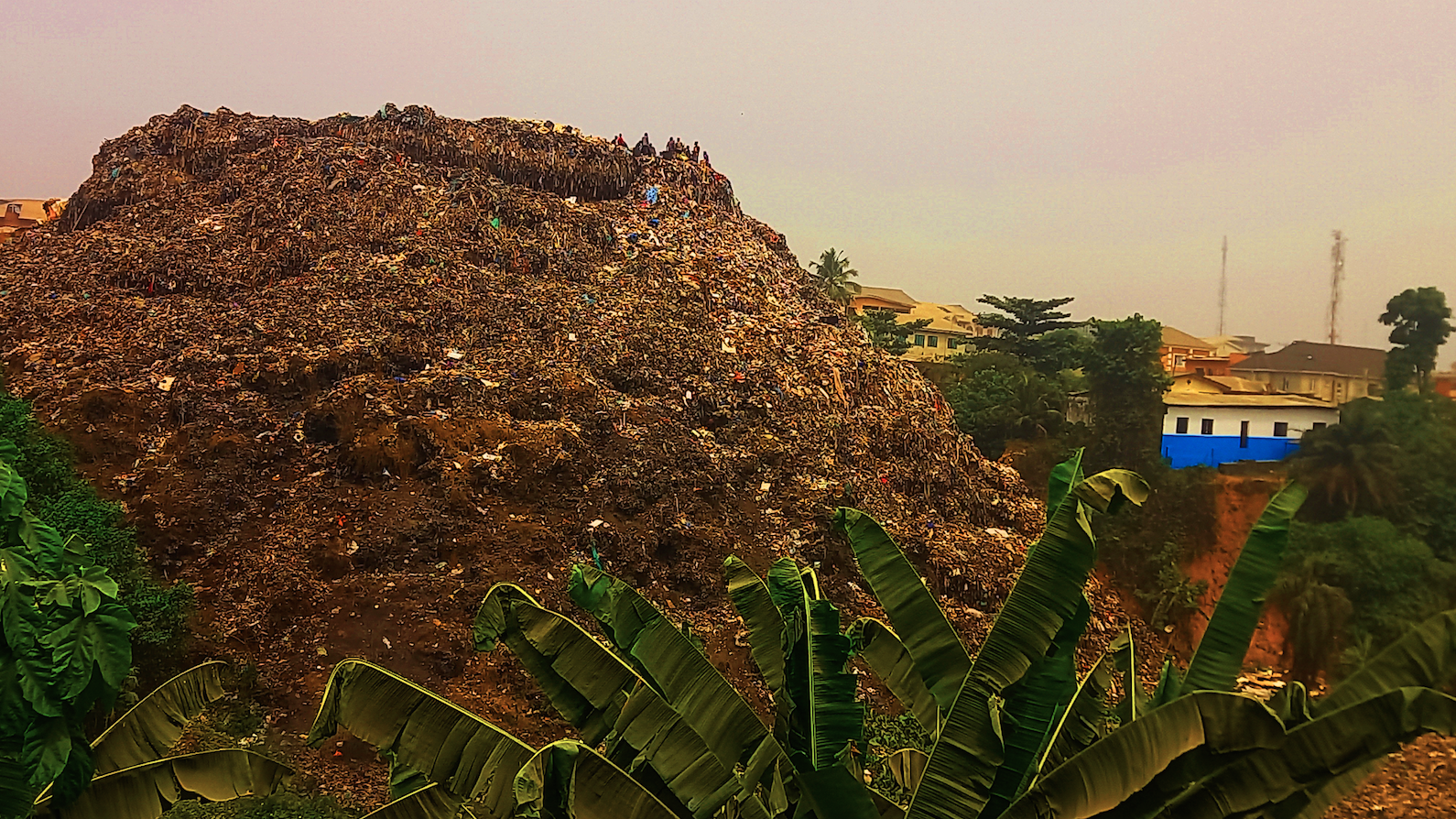
Environment experts also warn that as waste decomposes on an old landfill, it produces a toxic cocktail known as leachate. This toxic liquid can seep into the ground, polluting nearby water sources with harmful chemicals. If this contaminated water is used for drinking or cooking, it can lead to different kinds of health problems like cholera.
On June 24, Ogun state recorded one death and nine cases of cholera in seven LGAs. Tomi Coker, the health commissioner, announced that residents should adhere to precautionary measures to ward off the disease.
She said some local government areas including Ifo, Abeokuta south, Abeokuta north, Ijebu north, Obafemi Owode and Ado-Odo/Ota, have been identified as high-risk areas prone to the outbreak.
Subsequently, Abayomi Hunye, managing director of OGWAMA, said indiscriminate disposal of waste may pose a danger to water sources in the affected area, advising residents to stop exposing their waste to prevent the disease.
“A situation where some residents expose their waste indiscriminately poses a lot of danger because when it rains, these refuse will infect the underground water which, when not purified, will lead to water-borne infestation that will result in diseases like cholera,” he said.
“Aside from this, these waste also find their way to rivers and wetlands which will equally affect all the wells and boreholes in those areas leading to unwanted consequences.”
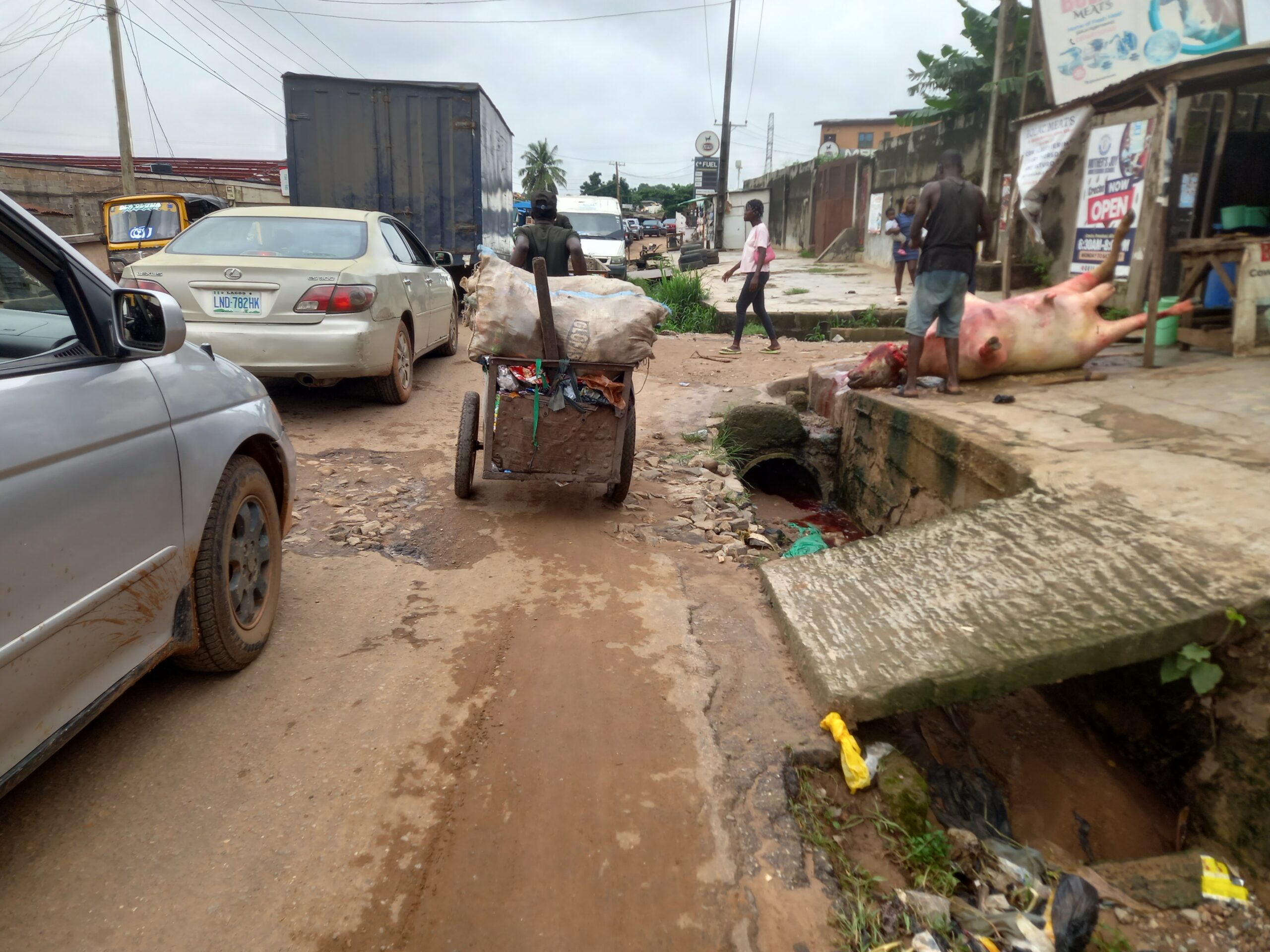
TheCable put to test samples from water sources close to the landfill. One sample was taken from a stagnant canal water directly in front of the landfill, while another sample was taken from a flowing stream beside the landfill and the third from a borehole dug not far from the landfill.
The analysis from the University of Lagos (UNILAG) laboratory showed that the borehole is not contaminated, but the canal water and flowing stream revealed some concerning parameters that exceed the National Environmental Standards and Regulations Enforcement Agency (NESREA) limits and necessitate treatment before environmental discharge.
Both water samples contain high Ammonia and Sulphide, showing signs of decaying organic matter that is toxic to aquatic life at high concentrations and causes foul odour in the vicinity.
Heavy metals like cadmium, iron and lead were also discovered in both water samples, confirming that they can wreak havoc on nearby water sources, and this toxic cocktail can slowly affect water sources for years creating serious consequences like abdominal pain, high blood pressure, heart disease and kidney problems.
“The wastewater was analysed as received and the quality was unsatisfactory due to the high Chloride, BOD, COD, Ammonia, Sulphide, Cadmium, Iron, Lead and THB. It should be treated before discharge to the environment. It does not satisfy the NESREA limits,” a part of the test result reads.
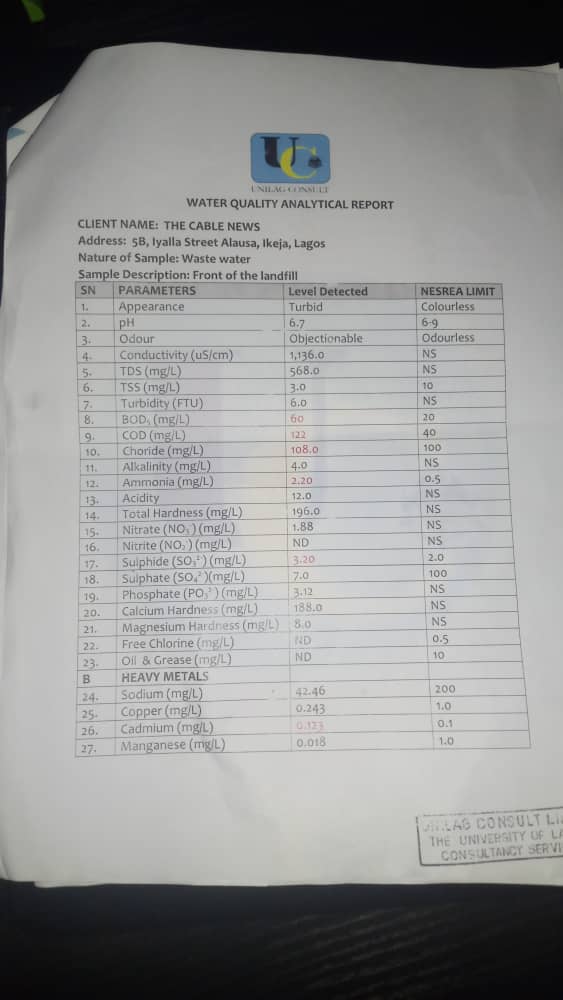

The World Health Organisation (WHO) said contaminated water and poor sanitation are linked to transmission of diseases such as cholera, diarrhoea, dysentery, hepatitis A, typhoid and polio.
The report said 1.8 billion people use a drinking water source contaminated with faecal matter, adding that absent, inadequate or inappropriately managed water and sanitation services expose individuals to preventable health risks.
When OGWAMA was created in 2020, the agency was charged with the management of all types of waste including segregation, handling, labelling, storage transport, treatment and disposal in all LGAs of the state but the agency is not living to its duties in Giwa-Oke Aro community of Ifo LGA.
Add a comment






